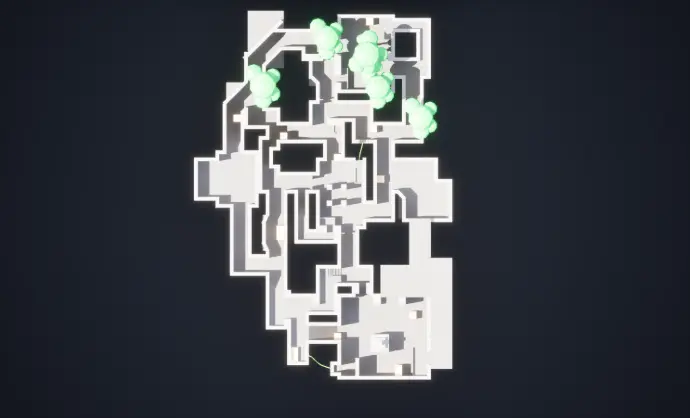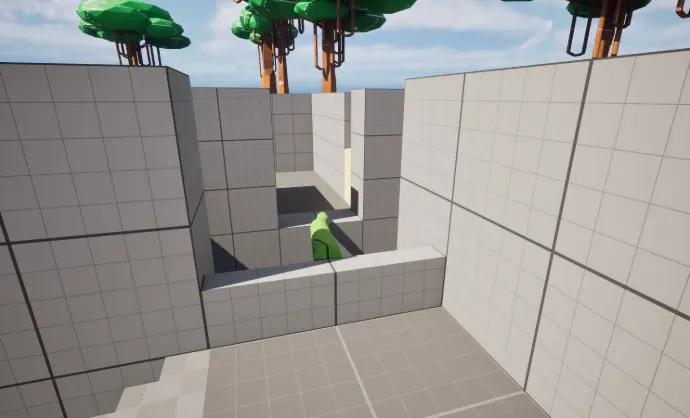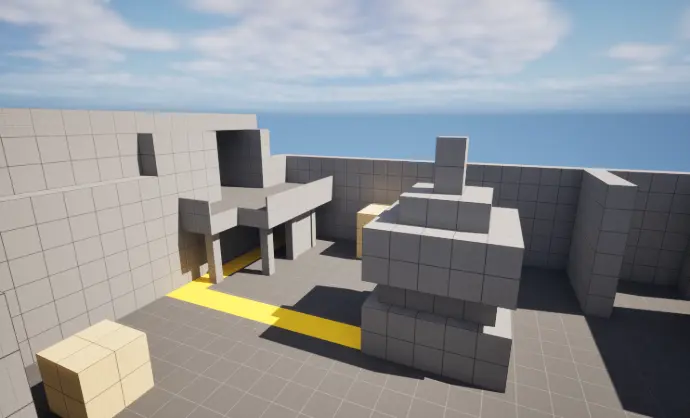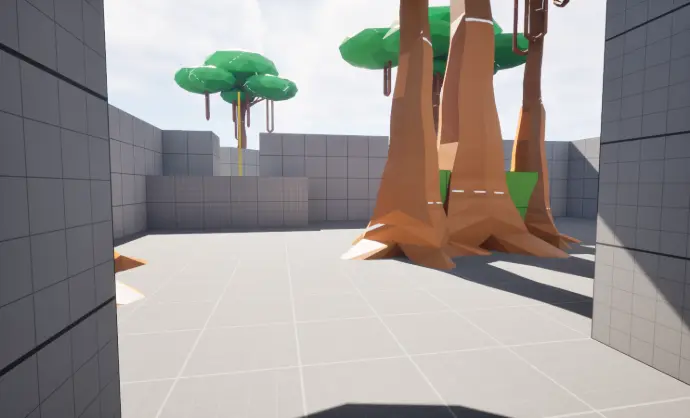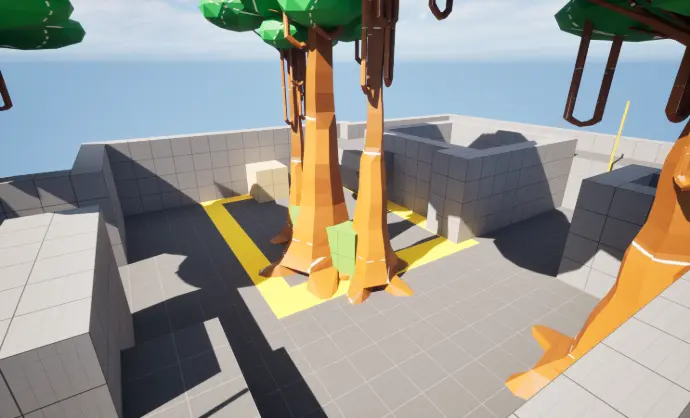Valorant Map Blockout
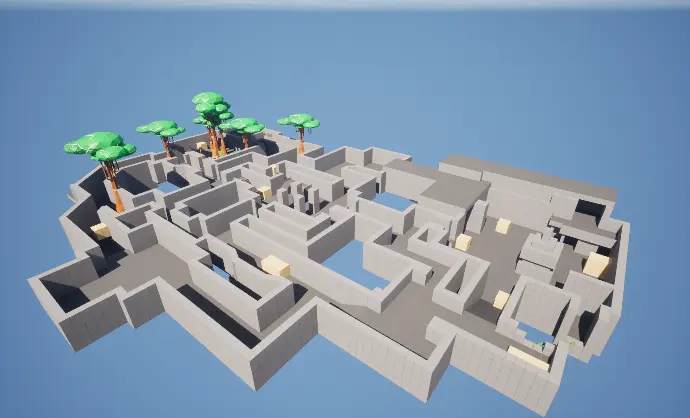
Overview
This map, entitled ‘Temple’, is inspired by the game Valorant and presents a unique environment based on Mesoamerican ruins and dense jungle.
Designed for 5v5 competitive gameplay, the map features two Spike sites with verticality points, slippery vines as a new movement mechanic, and strategic paths that encourage fast rotations.
My aim was to create an immersive and engaging experience that retains the fundamentals of a tactical FPS while introducing a new dynamic of mobility and natural elements into the gameplay.
Process
Concept Draft
The initial idea behind this map was to combine the strategic structure of maps like Split in Valorant, with a rich natural environment inspired by Mesoamerican civilisations. I wanted to exploit the theme of wild jungle and ruined temples to create visually striking spaces, while offering interesting viewpoints and combat zones.
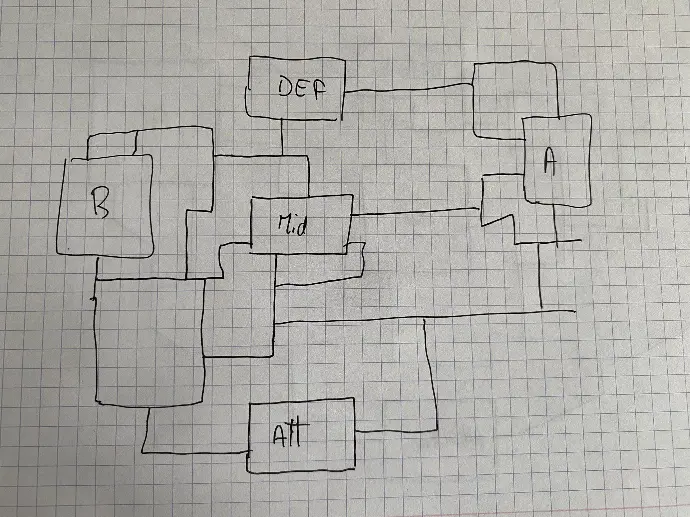
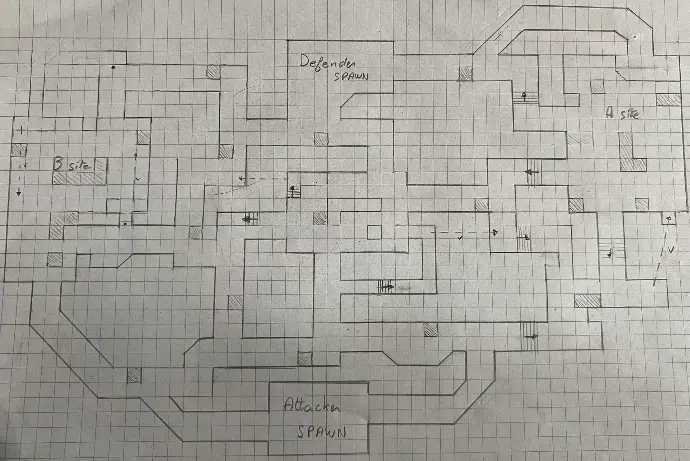
Paper Draft
After laying the foundations of the level design in the Concept Draft, this phase allowed me to focus on improving the level design by fine-tuning the positions of key areas and optimising the gameplay flow. Based on the initial positioning of sites A and B, the Mid, and the chokepoints, I adjusted the size and layout of the corridors, while improving the legibility of the spaces and the balance between the different routes taken by the attackers and defenders.
The aim was to ensure strategic movement while avoiding areas that were too exposed or dominant. I also rethought the verticality and shooting lines to encourage a variety of confrontations and allow effective rotation between the two sites. This Paper Draft has therefore allowed me to better visualise and test the interactions between the zones, and to lay the foundations for the more detailed version to come.
Final Draft
I've produced a cleaner, more detailed map, refining the layout of the zones and positioning the obstacles precisely. I reworked the cover elements (trees, pillars, walls of ruins) to ensure that each zone offered balanced tactical possibilities for attackers and defenders. Each obstacle has been placed in such a way as to encourage a variety of engagements while maintaining a fluid dynamic between zones.
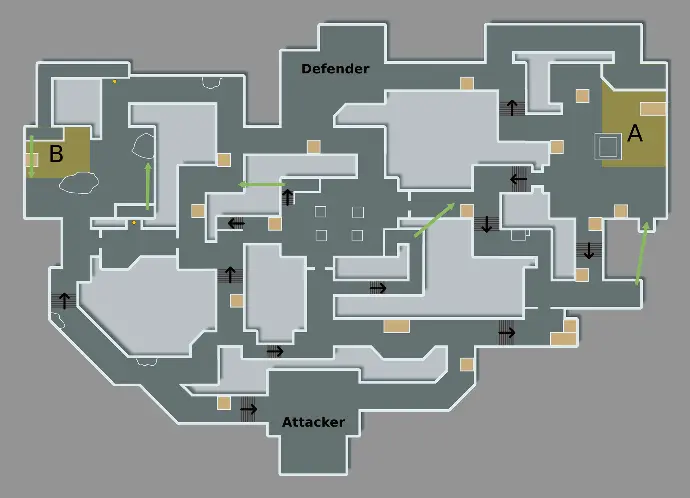
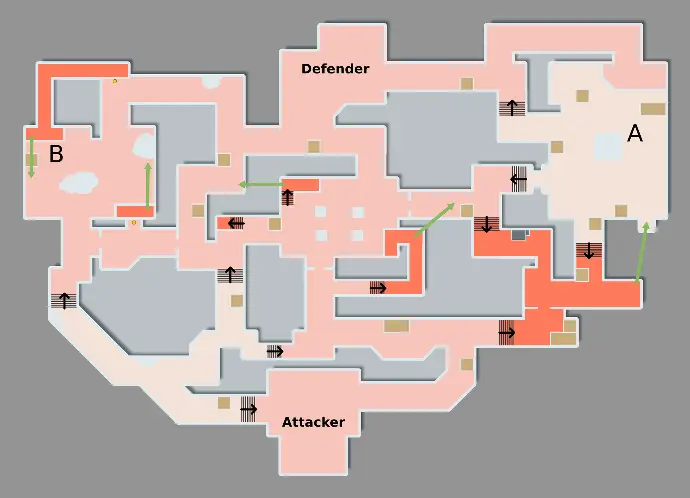
Ground Level Draft
At the same time, I defined the ground levels to integrate more verticality into the gameplay. I adjusted the heights of different points on the map, such as suspended platforms and elevated areas in the ruins, to offer tactical advantages, but also risks. This stage therefore enabled me to visualise the final gameplay more precisely, by anticipating the interactions between the positioning of obstacles, heights and the general flow of the map.

Blockout
Once the schematics were complete, I created the blockout in Unreal Engine 5, creating the different game zones and the main paths on the map. This stage allowed me to visualise the map in 3D and test the proportions, combat distances and lines of sight. Thanks to the in-game tests, I was able to identify adjustments that needed to be made, particularly to the width of the lanes, the layout of the obstacles and the balance between the different routes available to attackers and defenders. These adjustments ensured smoother movement and more balanced strategic engagements.
Level Scripting
The level scripting phase was used to add interactive elements to the map, in particular the sliding vines. Using Splines in Unreal Engine, I implemented the vines as a means of fast mobility, allowing players to move fluidly through certain areas. I've carefully adjusted the sliding speed, as well as the start and finish zones, to ensure a balance between speed of movement and player vulnerability while on the creepers. This mechanic adds a new dimension to the gameplay, offering dynamic movement options while maintaining strategic control points for the defenders.
